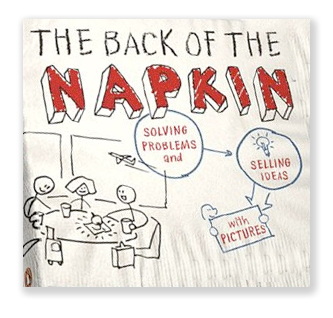We’re still doing a weekly newsletter… we’re just posting pieces of it every day. The news is fresher this way…

A ROUGH JOB – BUT JUSTICE WAS DONE
Inmates who have to carry on their post-conviction legal battles without assistance of counsel – and that would include just about all of them – sooner or later learn the hard way that neither court clerks nor the US Attorney’s Office can be trusted to send them filings or court orders in a timely manner.
 When we first began working with inmates, we found the complaint of non-service hard to believe. Well, not all of us – one of our number once practiced law in an Ohio city where it was ritual to go to the clerk’s office every Friday to check the dockets of cases in which he was involved, just to see what the other side had filed without serving him. But for those of us just out of law school, the idea of lawyers sand-bagging lawyers – or clerks failing to mail court orders of sheer negligence – did not comport with our rose-colored view of the practice of law.
When we first began working with inmates, we found the complaint of non-service hard to believe. Well, not all of us – one of our number once practiced law in an Ohio city where it was ritual to go to the clerk’s office every Friday to check the dockets of cases in which he was involved, just to see what the other side had filed without serving him. But for those of us just out of law school, the idea of lawyers sand-bagging lawyers – or clerks failing to mail court orders of sheer negligence – did not comport with our rose-colored view of the practice of law.
But, alas, we’re older and more cynical, and not a month passes that we don’t find that some USAO or some clerk has failed to mail an inmate an opposition pleading or court order. Today’s case is a cautionary tale about the need to use an electronic version of our colleague’s Fridays-at-the-Clerks approach, as well as how a court of appeals – sympathetic to the limitations on pro se litigation – can try to make it right.
Larry Gooch (known on the street as “Goo”) is doing time for a litany of crimes, including four felony murders. In a motion under 28 U.S.C. § 2255, Goo complained his lawyer was ineffective at trial. The district court turned him down.

A few weeks later, Goo, acting pro se, submitted a filing to the District Court, entitled “Request for Extension of Time,” filed a pleading asking for an “extension of time of 60-days to file a Certificate of Appealability.” His request said that, “[b]ecause Mr. Gooch is unlearned in the law, he will require more time to properly research and prepare his Certificate of Appealability.” After receiving Goo’s filing, the district court, which found his ineffectiveness question to be a close one, granted Goo a certificate of appealability (COA) under 28 USC 2253(c) to test the argument on appeal.
The district judge construed Goo’s “Request for Extension of Time” as a motion for extension of time to file a notice of appeal under Federal Rule of Appellate Procedure (FRAP) 4(a)(5)(A)(i), and granted “an extension to file within sixty days of this Certificate.”
 This is where Mr. Murphy made his appearance. In the midst of what the district court later called “downsizing, job sharing and sequestration,” the clerk’s office never sent Goo a copy of the apparently failed to mail Gooch a copy of the COA and order. Ten months later, Goo – puzzled that he had heard nothing – sent the court a letter inquiring about the status of his earlier request. The district court construed this letter as a motion for extension of time to file a notice of appeal under FRAP 4(a)(5) or, alternatively, as a motion to reopen the time to appeal under FRAP 4(a)(6), but denied it either way.
This is where Mr. Murphy made his appearance. In the midst of what the district court later called “downsizing, job sharing and sequestration,” the clerk’s office never sent Goo a copy of the apparently failed to mail Gooch a copy of the COA and order. Ten months later, Goo – puzzled that he had heard nothing – sent the court a letter inquiring about the status of his earlier request. The district court construed this letter as a motion for extension of time to file a notice of appeal under FRAP 4(a)(5) or, alternatively, as a motion to reopen the time to appeal under FRAP 4(a)(6), but denied it either way.
Goo then filed a motion with the U.S. Court of Appeals for the D.C. Circuit, asking leave to appeal. On Wednesday, the Court granted Goo’s motion.
The Court noted that FRAP 3 requires the filing of a notice of appeal is necessary before a court of appeals has jurisdiction to hear the appeal. There was no question that the filings 10 months after the fact were not timely under FRAP 4. In fact, the Circuit said, “Gooch made only one filing in the 60 days following the District Court’s denial of his § 2255 motion: his ‘Request for Extension of Time’.”
The good news, the Court said, is that while Goo’s timely filed “Request” “was not styled as a notice of appeal, it nonetheless may satisfy Rule 3 if it is the ‘functional equivalent’ of what the rule requires.” In order to do so, the document had to contain all of what FRAP 3 required be in a notice: (1) the party who was appealing, (2) the judgment or order being appealed, and (3) the court to which the appeal was taken.

The Circuit parsed Goo’s “Request for Extension of Time” until it found what it wanted to find. First, because the “Request for Extension of Time” identified Goo in the caption, the Court said, it identified the party taking the appeal. Second, Goo’s filing designated the judgment or order being appealed, because it explicitly referenced the district court’s denial of his 2255 motion. The Court’s bob-and-weave was especially impressive on the third requirement, holding that while “the ‘Request for Extension of Time’ does not ‘name the court to which the appeal is taken,”’ – which is the third and final requirement – failures to meet this requirement are excused where there is only one court to which the appeal can be taken, which is the case here.”
Goo never explicitly said he intended to appeal – the final requirement – but the Court of Appeals breezily excused that, too. The Court said
Although the document refers to Gooch preparing and filing “his Certificate of Appealability,” it appears to mean an application for a certificate of appealability because the certificate itself is prepared and issued by the court. See RULES GOVERNING SECTION 2255 PROCEEDINGS FOR THE UNITED STATES DISTRICT COURTS 11(a) (“The district court must issue or deny a certificate of appealability when it enters a final order adverse to the applicant.” (emphasis added)). In his filing, Gooch notes that the District Court “did not hold that it would not issue a Certificate of Appealability,” and requests additional time “within which to file his Certificate of Appealability” because “he will require more time to properly research and prepare his Certificate of Appealability.”
These statements clearly evince Gooch’s intent to obtain a certificate of appealability. As the only purpose of such a certificate is to pursue an appeal, Gooch’s intent to pursue an appeal can reasonably be inferred from his intent to file an application for the certificate.
It is correct, as inmates love to cite in their pleadings (as if the judges don’t already know it), that the Supreme Court requires courts to “liberally construe” documents filed pro se. Here, the D.C. Circuit found that “an intent to appeal can be reasonably inferred from the request” for extension of time, and it was loathe to dismiss the 2255 on procedural grounds rather than on the merits.

The Court concluded that “Gooch’s ‘Request for Extension of Time,’ which was filed within the time period specified by Rule 4, constitutes the functional equivalent of a notice of appeal… [and] we have jurisdiction under 28 USC Sec. 2253(a) to consider the merits of his appeal.
To be sure, the Court of Appeals virtually held that a scrawl on the back of a cocktail napkin could serve as a functional stand-in for a FRAP 3 notice of appeal. But few can complain that this time, in its contortions, the D.C. Circuit did not do justice here.
United States v. Gooch, Case No. 15-3030 (D.C. Cir., Dec. 6, 2016)

